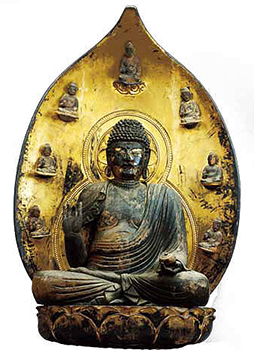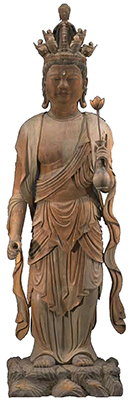Rankings: The Heartfelt Artistic Expression of Buddhist Sculpture from Northern Japan
Highlights of the Exhibition
Seated Yakushi Nyorai (Bhaisajyaguru)
Heian period, 9th century
National Treasure
Shojoji, Fukushima
Seated Yakushi Nyorai (Bhaisajyaguru)
Heian period, 9th century
Important Cultural Property
Sorinji, Miyagi
Photo by:TOHOKU HISTORY MUSEUM
Seated Yakushi Nyorai (Bhaisajyaguru)
Heian period, dated 862 (Jogan 4)
Important Cultural Property
Kokusekiji, Iwate
Page top

Standing Junishinsho (Twelve Heavenly Generals)
Chushin (Ox General), Inshin (Tiger General), Boshin (Rabbit General) and Yushin (Rooster General)
Kamakura period, 13th century
Important Cultural Property
Honzan Jionji, Yamagata
Standing Sho Kannon Bosatsu (Arya Avalokitesvara)
Heian period, 11th century
Important Cultural Property
Sorinji, Miyagi
Photo by:TOHOKU HISTORY MUSEUM
Standing Juichimen Kannon Bosatsu (Ekadasamukha)
Kamakura period, 14th century
Kyubunhama Kannondo, Miyagi
Photo by:TOHOKU HISTORY MUSEUM
Standing Sho Kannon Bosatsu (Arya Avalokitesvara)
Heian period, 10th century
Konuma Jinja, Akita
Photo by:TOHOKU HISTORY MUSEUM
Standing Shaka Nyorai (Sakyamuni Buddha)
By Enku
Edo period, 17th century
Jorakuji, Aomori
Photo by:Sudo Hirotoshi
Page top









